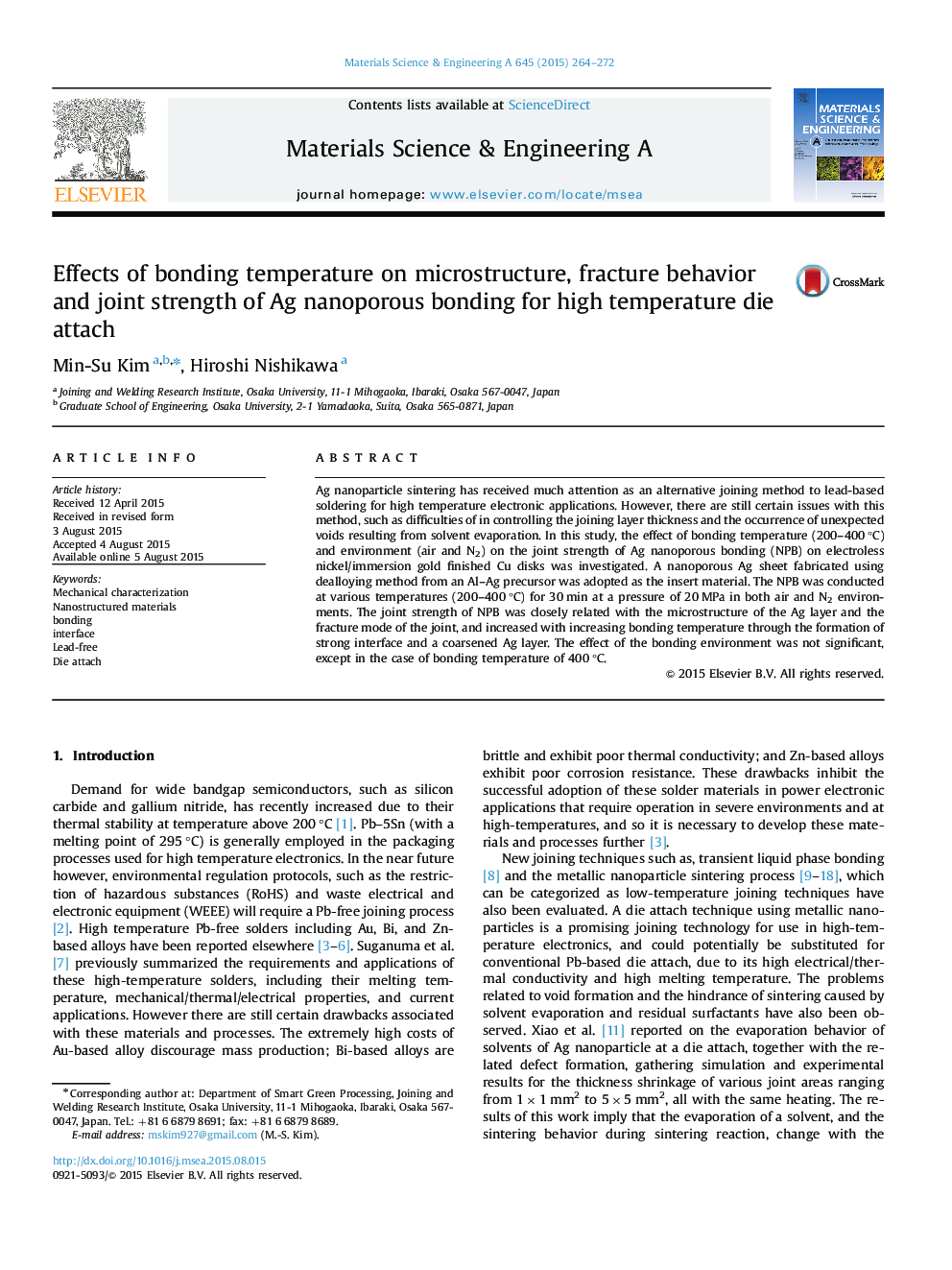| Article ID | Journal | Published Year | Pages | File Type |
|---|---|---|---|---|
| 7976993 | Materials Science and Engineering: A | 2015 | 9 Pages |
Abstract
Ag nanoparticle sintering has received much attention as an alternative joining method to lead-based soldering for high temperature electronic applications. However, there are still certain issues with this method, such as difficulties of in controlling the joining layer thickness and the occurrence of unexpected voids resulting from solvent evaporation. In this study, the effect of bonding temperature (200-400 °C) and environment (air and N2) on the joint strength of Ag nanoporous bonding (NPB) on electroless nickel/immersion gold finished Cu disks was investigated. A nanoporous Ag sheet fabricated using dealloying method from an Al-Ag precursor was adopted as the insert material. The NPB was conducted at various temperatures (200-400 °C) for 30 min at a pressure of 20 MPa in both air and N2 environments. The joint strength of NPB was closely related with the microstructure of the Ag layer and the fracture mode of the joint, and increased with increasing bonding temperature through the formation of strong interface and a coarsened Ag layer. The effect of the bonding environment was not significant, except in the case of bonding temperature of 400 °C.
Related Topics
Physical Sciences and Engineering
Materials Science
Materials Science (General)
Authors
Min-Su Kim, Hiroshi Nishikawa,
